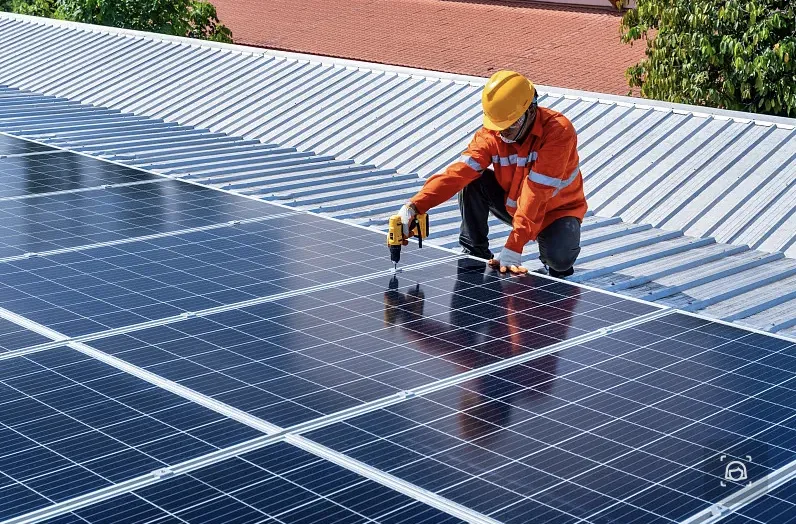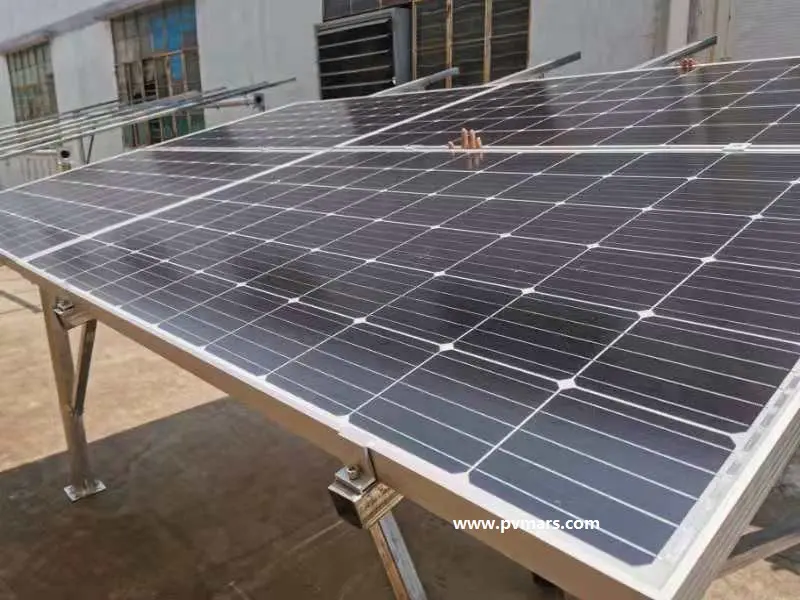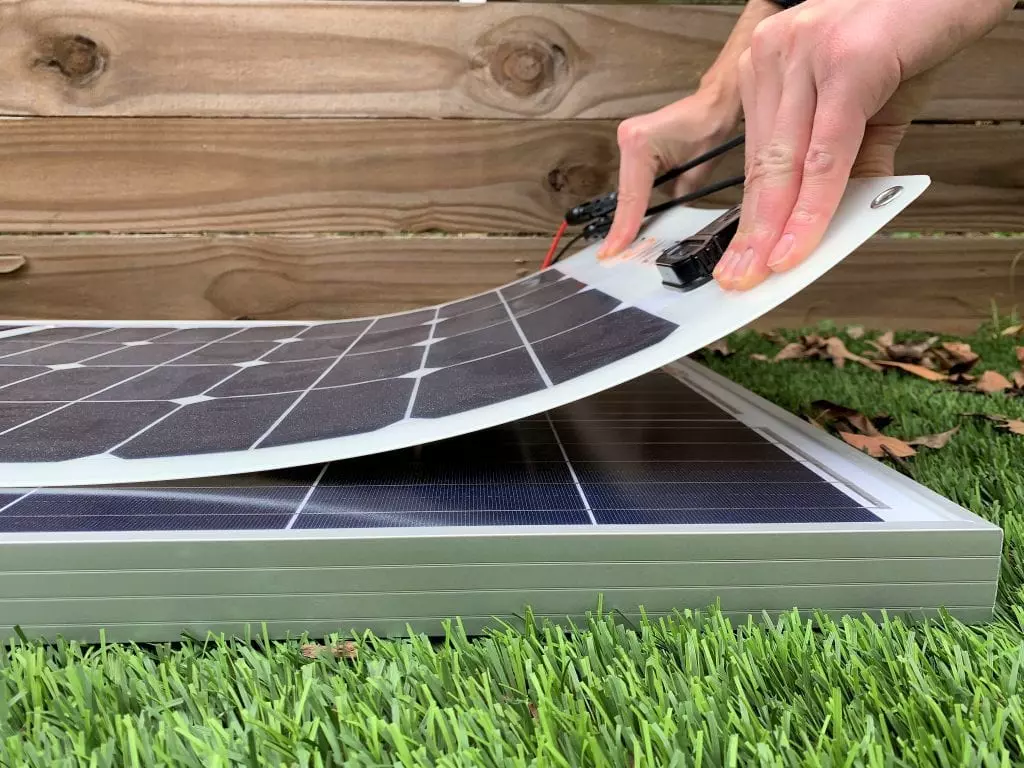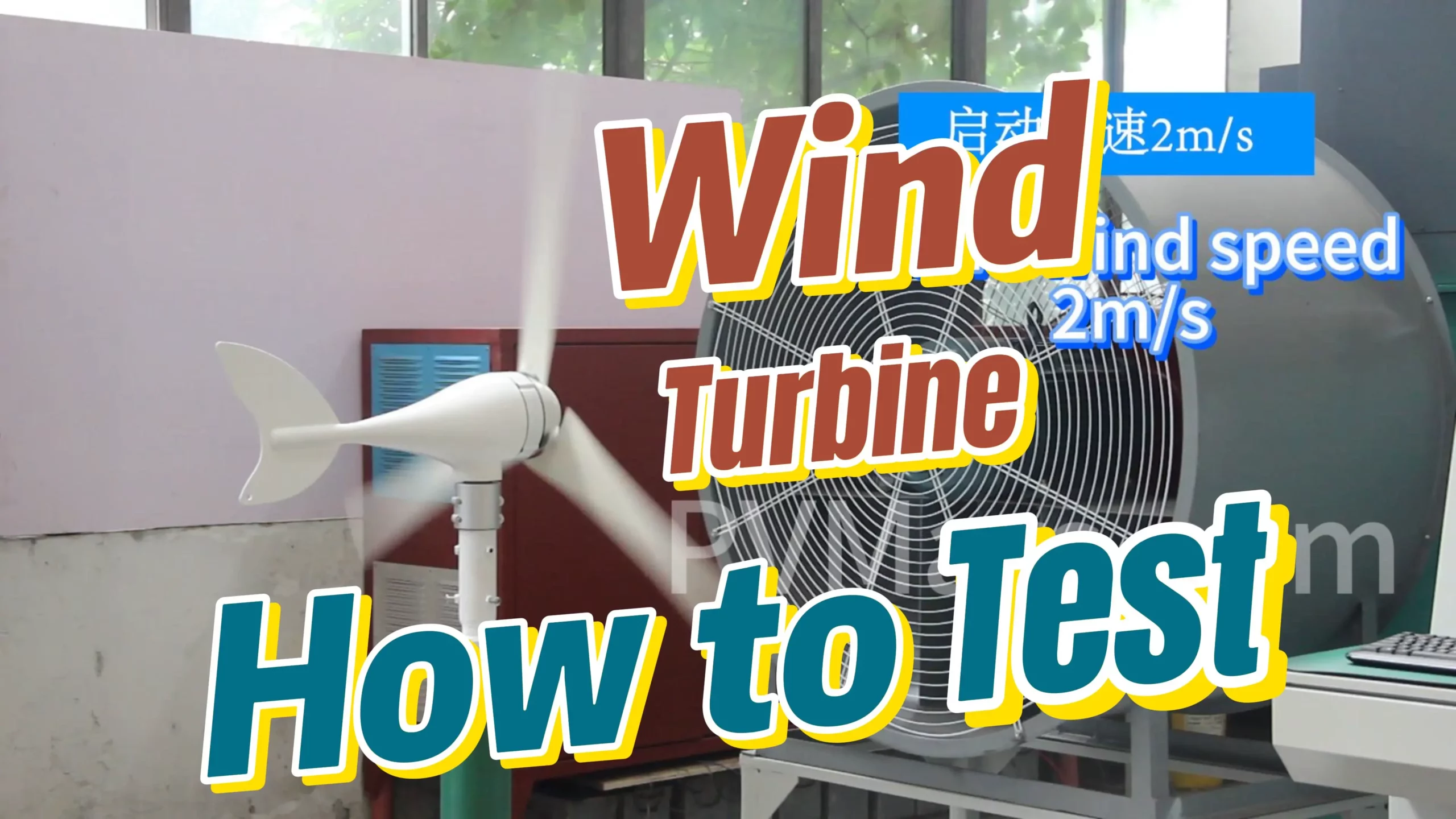Off-grid solar systems can save you high electricity bills and let you use them freely. It’s not limited by solar energy instability, so it’s even possible to use solar power at night.
PVMARS will break down the off-grid solar system into:
1- Single-phase off-grid solar system
2-Three-phase off-grid solar system
How are they different? What are the respective application scenarios? Follow PVMARS pace and read carefully and you will find out.
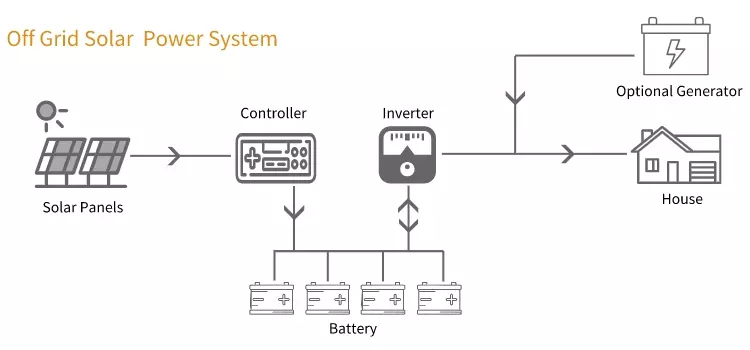
Single-phase and three-phase off-grid solar system applications
Single-phase solar systems are mainly used in homes, and electrical loads are usually 110V-120V-220V-240V.
Three-phase solar systems are mostly used in offices, farms, factories, mines, etc. Electrical loads have AC voltages of 380V-400V-500V-800V.
The biggest difference between them is the AC voltage output, and the voltage is closely related to your electrical load.
PVMARS has created a load table. Just fill in the power of the appliances you are using and you can calculate how much power your off-grid solar system will be designed for.
If you are interested, click on the orange font to download the document and get more information.
Renewable energy industry terminology
What's inside an off-grid solar system?
- Solar panel
- Photovoltaic combiner box (optional)
- Solar charge controller
- Solar Inverter/Hybrid Inverter
- Gel battery/lithium battery
- Solar panel brackets and cables
We understand that when someone describes a hybrid inverter, they may mean an off-grid solar system.
Because off-grid solar systems can also switch to utility grid bypass or charge in 0.0001 seconds when the battery is low.
It may also refer to on and off-grid hybrid system. When the power generated exceeds the power consumption and the battery is fully charged, the remaining power can be sold to the local public grid company.
As long as you clearly state your real needs, PVMARS can meet them.
Note: Bypass means that mains power directly carries the load through the inverter without inversion. At this time, the inverter can be considered a wire, which only connects the main power and the load.
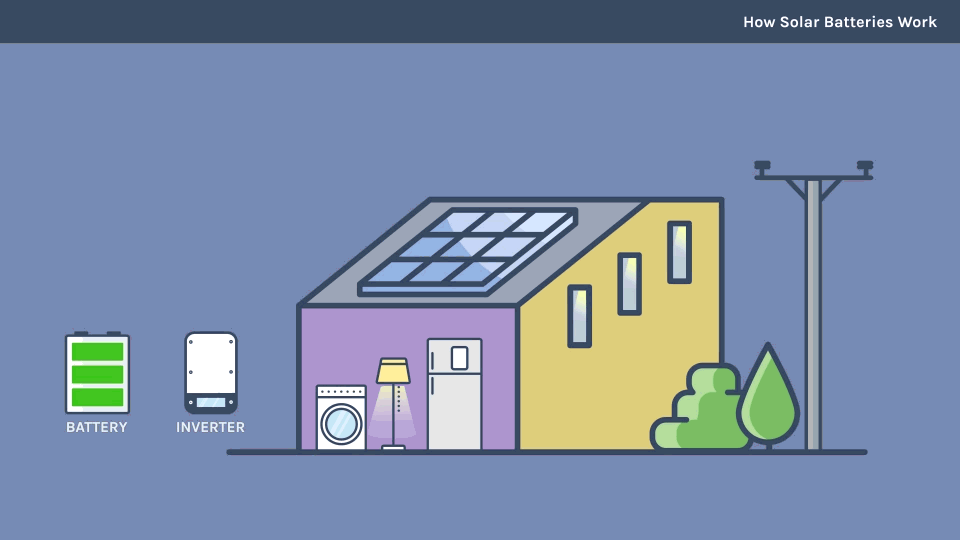
Prerequisites for designing an off-grid solar system
We need to consider the following factors:
- Load
- Electricity consumption
- Application scenarios
If it is a newly built house, we need to consider your budget.
A simple calculation is as follows:
Our conventional off-grid solar system design is calculated based on 4-6 hours of average daily strong light.
Theoretically, a 5kW solar system can generate electricity for 4-6 hours a day.
5kW * 6 hours (4 hours) = 30kwh (20kwh) – 1kwh is equal to 1 kilowatt hour of electricity.
So a 5kW solar system can theoretically produce 30 or 20 kilowatt hours of electricity per day.
Engineers suggest the inverter is generally designed to be 1.2-1.5 times the load.
Although the inverter can work at full load, but if bear 80% of the load will give the inverter a longer service life. For example, if the load is 5KW, an inverter (system) of at least 6KW is recommended.
How to design an inverter for an off-grid solar system?
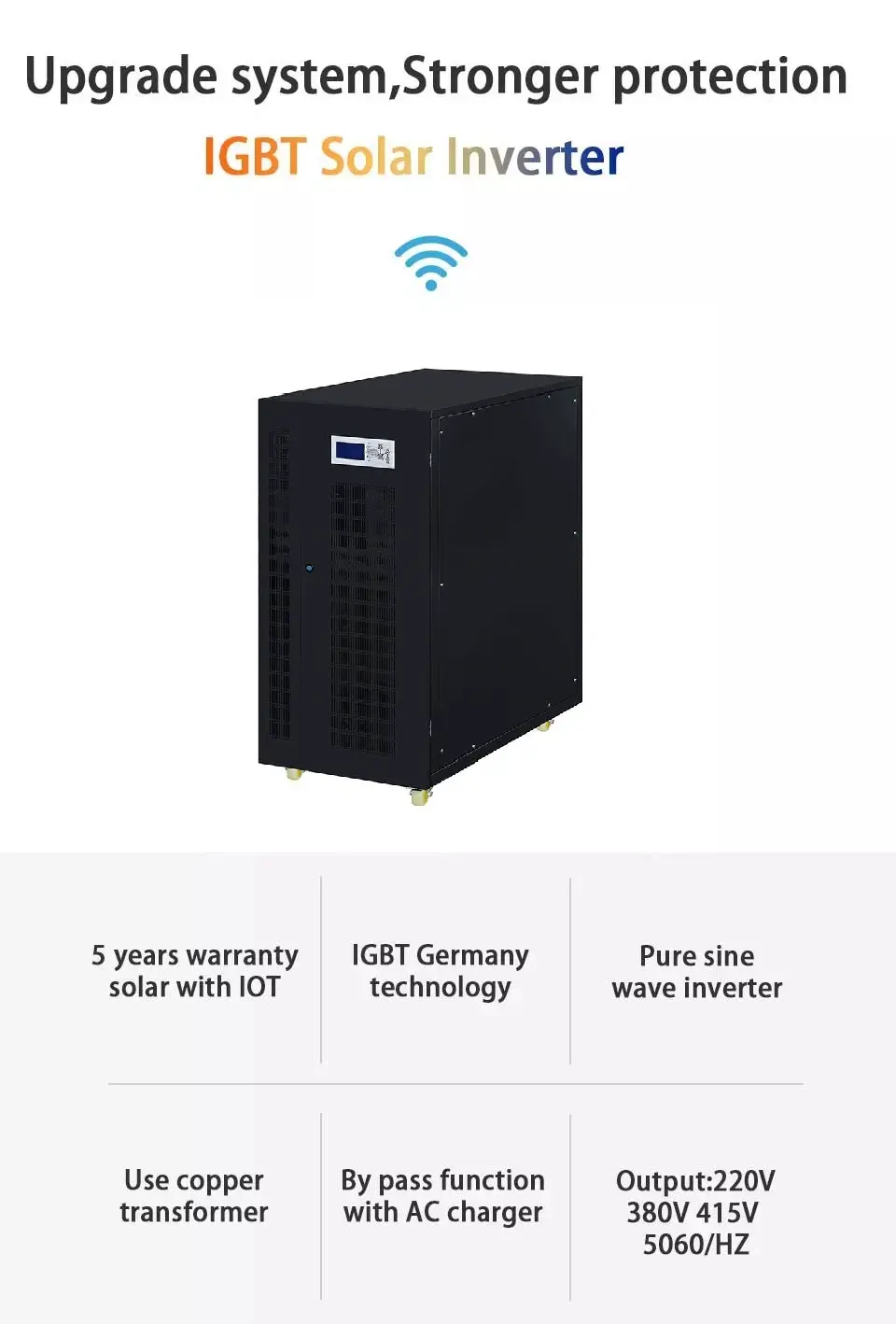
The inverter power depends on the load power. Among them, the following loads exist:
- Capacitive loads—with capacitance
- Inductive loads—with a motor
- Resistive loads—-heating wire
- Normal load
Ordinary and resistive loads are calculated according to their nominal power.
Inductive loads, water pumps, and air conditioners need to be calculated at least 3-4 times (2 times for inverter air conditioners is enough).
Based on 6-10 times — refrigerator calculations. We calculated that different compressors from a variety of manufacturers require different refrigeration starting powers. Generally, a 100W refrigerator requires an inverter of more than 1kW to start.
Example:
1-Household: no air conditioning, refrigerator, lights, fans, TVs, computers, etc. — Use about 2kW inverter
2-The load is a single-phase water pump, the rated power is 1kW, and the maximum starting power is 3.5 times — Use at least 4kW inverter
3-The load is a three-phase water pump. The rated power is 2.2kW. You can add a 3.75kW VFD to achieve a soft start — You can choose a 4kW inverter or a 12kW inverter (if no VFD is added)
Electrical products such as water pumps can use VFD wiring. The power of the frequency converter (VFD) is generally higher than the power of the motor (water pump), and the solar inverter is larger than the frequency converter.
Note: Air conditioners, refrigerators, etc. Cannot use VFD. One frequency converter can only be connected to one motor (a water pump).
How to design solar panels for an off-grid solar system?
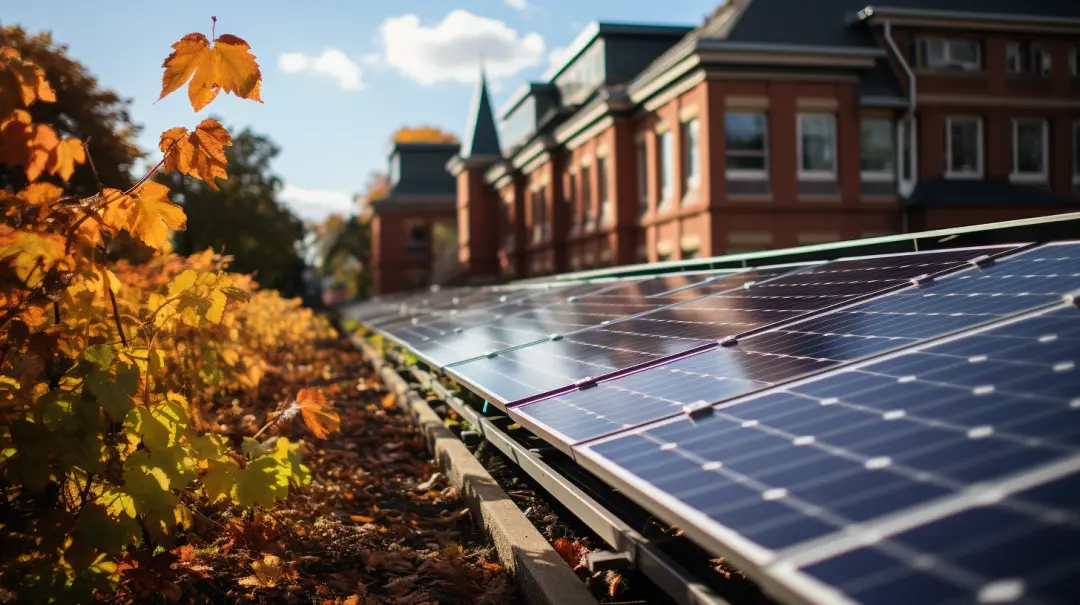
The number of solar panels depends on your electricity usage (battery charging is also considered)
Example: Monthly electricity consumption is about 300kWh.
300kWh / 30 days = 10kWh per day, 10kWh / 6 hours = 1.666kW, a 2kW solar panel is recommended.
In the solar industry, if a 12V battery needs to be charged by a solar panel, the DC voltage of the battery needs to be multiplied by 1.5 times. This is to obtain the corresponding solar panel wattage and voltage.
So if there is only one 12V battery that needs to be recharged by the solar panel, it can only be 12V x 1.5 times = 18V.
Then a 12V battery needs to be charged with a solar panel with 18V voltage. We can choose a 150W or 200W solar panel model. Solar panels below 18V cannot charge 12V batteries.
In the same way, a 36VDC solar panel can charge a 24VDC battery.
Note: 18V and 36V here refer to the solar panel’s working voltage. 300W-350W solar panels work at 36VDC.
Changing voltage: What is the relationship between solar panels in series and parallel?
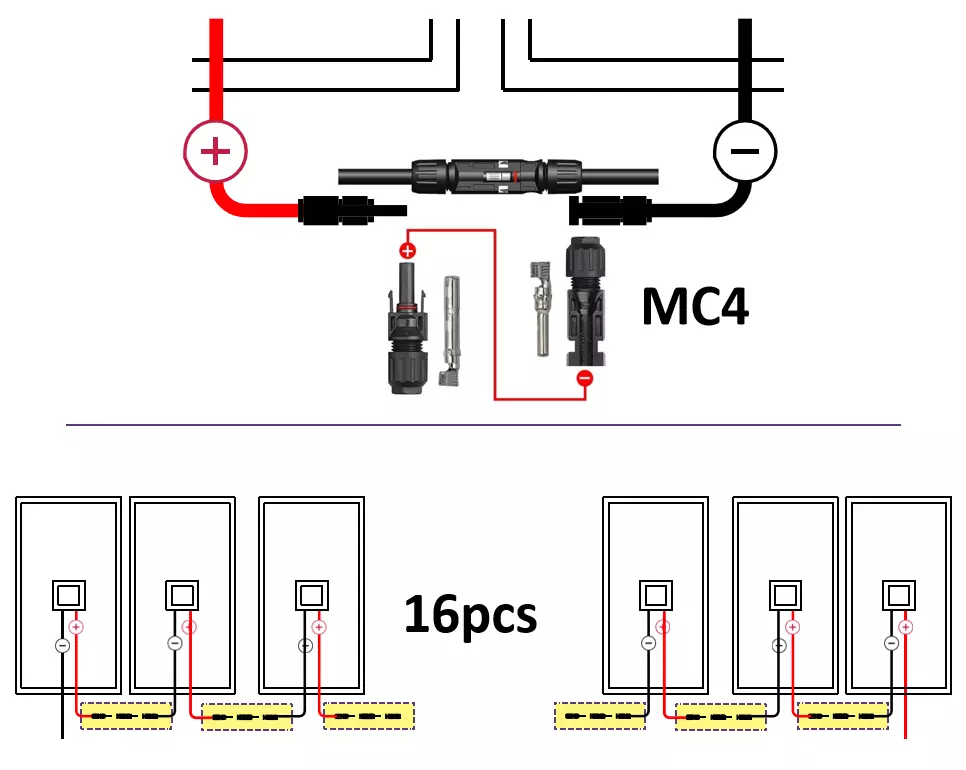
Parallel circuits are composed of branches whose voltages equal the total voltage (U=U1=U2=…=Un) — U is the voltage unit.
When connected in parallel, the currents add up (I=I1+I2+……+In) — I is the current unit.
The voltages in a series circuit add up and the currents are equal. Parallel circuits have equal voltages and add up currents.
Example: Concatenation
48VDC system—2 solar panels connected in series
96VDC system—4 photovoltaic panels connected in series
192VDC system with 8 solar panels connected in series
In parallel
Looking at the system configuration, if you want to equip a 3200W photovoltaic panel, the battery DC voltage is 96VDC.
Consider 10 x 320W solar panels: 4 panels in series have a voltage equal to 96VDC, but in the end, there will be 2 panels left that cannot be connected in series.
If you switch to 300W panels, there are 11 panels. 11 divided by 4 equals 2.75. There are no 0.75 solar panels, so it still won’t work.
You have 2 options
1) There are 12 x 300W solar panels, a total of 3600W, 4 in series and 3 in parallel.
2) There are 12 x 280W pv panels, a total of 3360W, 4 in series and 3 in parallel.
Therefore, in addition to considering your household electricity consumption, the number of solar panels also needs to be calculated for the DC voltage (battery voltage) of the entire off-grid solar system.
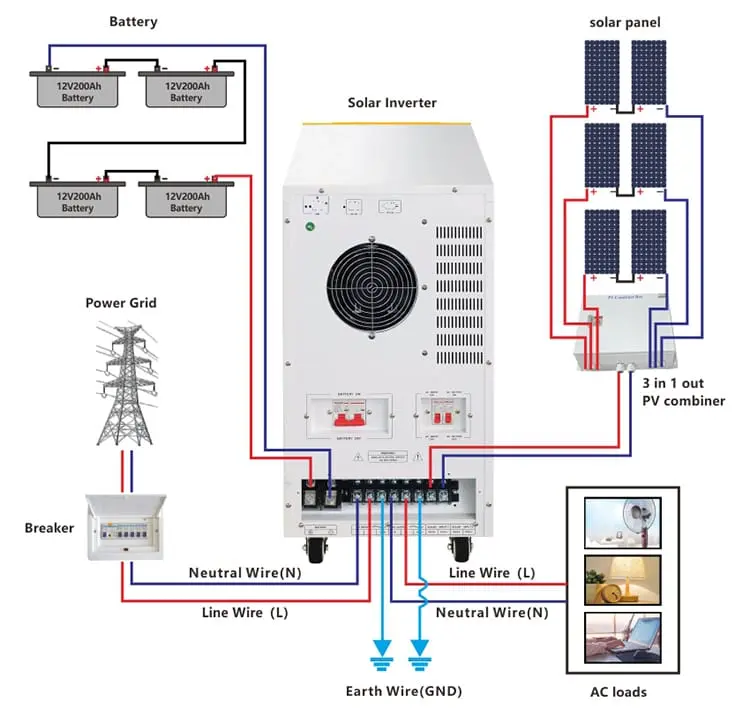
Other questions about solar panels
Installation direction:
The southern hemisphere faces north, the northern hemisphere faces south. Can be flat near the equator
Installation angle:
About 15-45 degrees, if the installation location dimension is 10 degrees, the installation inclination can be between 5-35 degrees
Installation area:
Taking into account the gaps between solar panels, the gaps between each set of photovoltaic arrays, and the installation area of the sloped roof, we usually calculate it at 2.2 square meters.
If it is installed on the ground or on the roof (flat), consider an installation area of 2.5 square meters.
Because it is necessary to consider whether the shadow of each group of photovoltaic panel arrays will block the photovoltaic panels in the back row.
Note: Many people will think that the solar panel size is 1956*992mm, so the area of a photovoltaic panel is 2 square meters, but they ignore the gap problem.

How to design a photovoltaic (PV) combiner box for an off-grid system?
The main function of the combiner box is to lightning protection and connect solar panels.
PVMARS combiner box has surge and lightning protection. During thunderstorms, the solar panels and other accessories in the system are protected by fuse disconnection.
Among them, H4T means a 4-way combiner box, and H6T means a 6-way input. PVMARS produces H4T-H10T models.
***The number of channels represents how many groups of solar panels are connected in parallel.
In general, in solar system design, it can be defaulted that each group of solar panels can emit 10A of current at its peak. This is very critical and has to do with the controller matching.
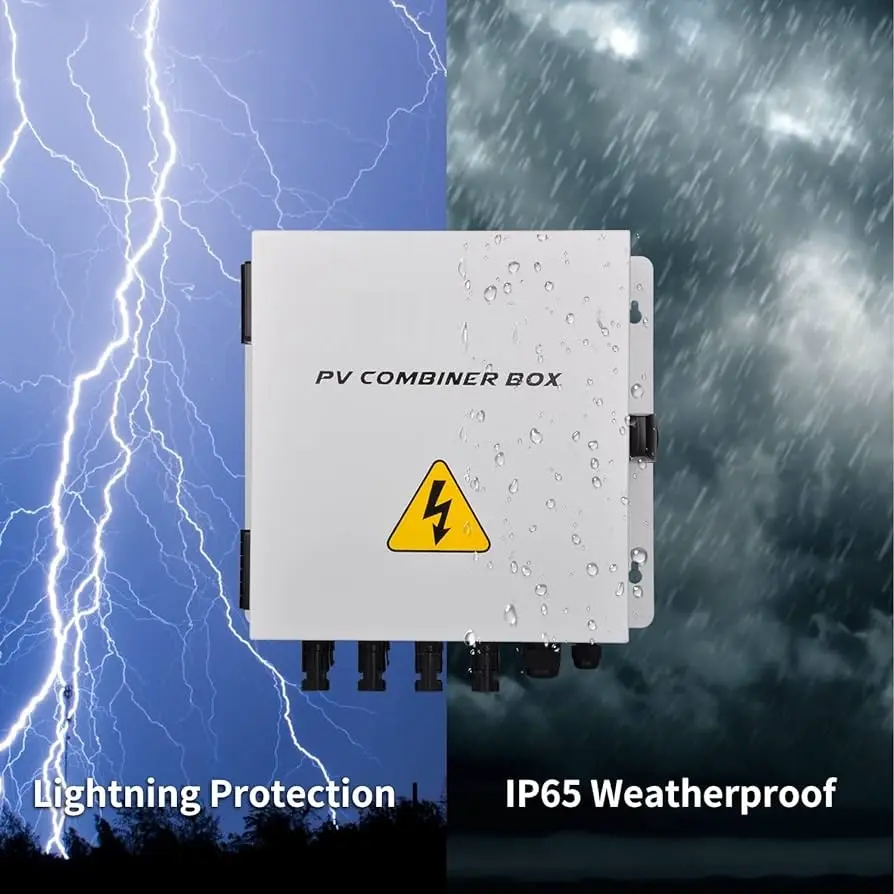
How to design a solar charge controller for an off-grid system?
The solar power needs to go through a charge controller to reach the battery. Without a charge controller, the battery cannot store solar energy.
96V and 192V 80A solar controllers. It can be seen that 80A is the maximum DC the controller can pass.
Therefore, a maximum of 8 solar panels can be connected, which is an H8T combiner box.
The maximum input power of the 192V 80A controller can be multiplied by that power to get:
192 x 80 = 15.36 Kilowatts. Solar panels have a maximum power of 15.36kw.
Consider a solar charge controller that 192V100A if it exceeds this.
Please note that the maximum current of the MPPT solar controller’s high voltage 360VDC – 380VDC – 384VDC is 250A. The low-voltage 12VDC-48VDC controller’s maximum current is 100A.
If there are many solar panel designs, 2-3 100A MPPTT controllers may be needed.
If used in high-altitude areas of 3000 meters to 6000 meters, the controller’s power needs to be discounted, generally calculated at 70% of the rated power. In other words, higher altitudes require larger controllers.
The normal requirement is 60A, but since the solar system is installed at a high altitude of 4,000 meters, a 100A controller should be configured.
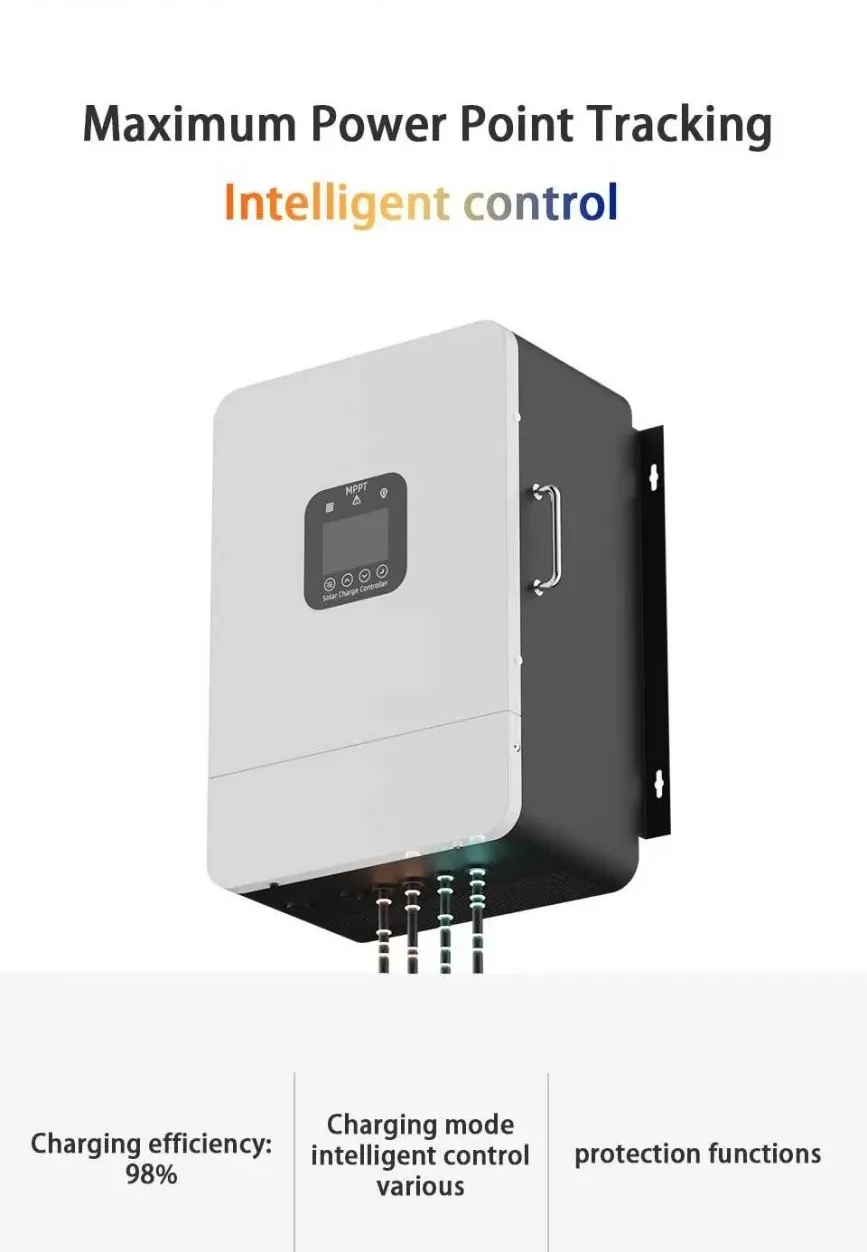
How do I calculate the array of solar panels?
For example 96VDC off-grid solar system with 485W solar panel, 96VDC 60A MPPTT controller.
485W solar panel operating voltage 52.28V, current 12.23A
MPPT solar controller 96VDC x 1.35 (coefficient) = 129.6v (optimal photovoltaic operating voltage)
Usually, the system DC voltage is multiplied by 1.35 to obtain the optimal PV operating voltage.
So in the end 129.6V / 52.28V = 2.47 ≈ 3, it is recommended to connect 3 solar panels in series.
Please note that 96V * 60A = 5760W, it is recommended that the solar panel power does not exceed this 5% (ie 6048W).
We can design it as 9 pieces of 485w solar panels (4365w) or 12 pieces of 485w photovoltaic panels (5820w).
If there are 9pcs 485W solar panels, the array will be three in series and three in parallel.
For 12 x 485W photovoltaic panels, 3 are connected in series and 4 in parallel.
Both require H4T photovoltaic combiner boxes
PV combiner boxes are available in H4T, H6T, H8T, and H10T models (no H3T).
How to design batteries in off-grid solar systems?
Since we live off the grid, we need something to store energy. PVMARS recommends batteries for energy storage. For a better understanding, we will take a 12V gel battery as an example.
The battery voltage needs to be consistent with the inverter voltage, which means that a 48VDC inverter requires four 12V batteries connected in series.
The 96VDC inverter is composed of 8 12V batteries connected in series. When increasing or decreasing, the unit must be the battery pack.
Off-grid solar systems usually use 12V100AH, 12V150AH, 12V200AH, 12V250AH, and other models.
Gel batteries have a 6-8 year service life for home systems. After the battery ages, it can be recycled — Please refer to local government requirements for details and recycle locally.
Most home systems use 12V batteries, while larger systems use 2V batteries.
Since high-power systems have 360VDC, at least 30 12V batteries need to be connected in series.
The number of parallel connections is usually 4-6 battery packs.
More batteries are connected in parallel, the lower the consistency. It is easy to form an internal cycle and reduce the battery’s service life.
The 2V battery has a large capacity and can reach 2000AH and 3000AH. So, 1 string of 2V batteries is enough. Since one group is 180 cells in series (2 x 180 = 360VDC), consistency is high.
The charge and discharge current of a 2V battery is larger than that of a 12V battery.
So 2V batteries have greater advantages than 12V batteries, so why do we still choose 12V batteries for home systems?
Because home systems use 2V batteries, the cost is too high. Assume that a 48VDC system requires 4 x 12V batteries in series. But if you change your batteries to 2V batteries, you will need at least 24 x 2V batteries.
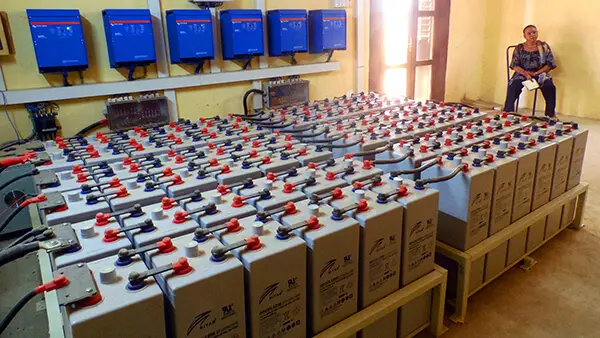
Calculation of battery capacity:
Expression of single battery capacity: Wh
12V*150AH=1800Wh×0.8=1440Wh
12V*200AH=2400Wh×0.8=1920Wh
12V*250AH=3000Wh×0.8=2400Wh
To extend battery life, use 80% DOD (depth of discharge) of gel battery capacity.
If your budget is sufficient, PVMARS recommends lithium batteries because lithium batteries have 95%-100% DOD.
General examples:
The 3KW off-grid solar system has 4 x 12V200AH batteries connected in series.
The 5kW off-grid solar system has 8 x 12V batteries connected in series.
10kW has 16 batteries (8 strings of batteries, 2 strings in parallel).
Use a 150AH battery or a 200AH battery?
Take into account your backup time and budget.
By looking at our regular design, we can see:
The 3KW solar system’s battery capacity is 9.6kWh
5kW photovoltaic system battery capacity is 19.2kWh
10kW solar system battery capacity is 38.4kWh
The battery capacity is about 3-3.8 times the solar system capacity (9.6kWh/3kW; 19.2kWh/5kW; 38.4kWh/10kW).
The above does not consider extending battery life. A multiplier of 0.8 is required if it is taken into account.
Example:
Designing a 12KW 192VDC off-grid solar system requires a 39KWH capacity battery for backup (3 times).
If you choose 150AH battery, 39000Wh / (1800Wh*0.8) = 27.08 150AH battery.
Considering the DC voltage of the system is 192V / 12V = 16 batteries connected in series, 2 strings are required. Ultimately, 32 x 150AH batteries will be designed.
200AH battery, 39000Wh / (2400Wh*0.8) = 20.31, also requires 16 batteries in series. If you design 32 batteries, it seems too much, and the charging cost will be higher.
So what if it is a 250AH battery? 39000Wh / (3000Wh*0.8) = 16.25, 16 250AH batteries are needed in series, one set is enough.
Through calculation, choosing a battery capacity of 250AH is consistent with a 12KW 192VDC off-grid solar system.
If you don’t like calculations, contact PVMARS sales engineers directly and they will provide you with a complete quotation plan.
How to design cables for an off-grid solar system?

Wires are the most overlooked part of the off-grid system. Most customers may think they can buy wires at local stores, so they don’t pay attention to its model specifications.
PVMARS will explain this most forgotten part in detail. After all, without wires, it is impossible to connect and use the entire off-grid system.
Cables used in photovoltaic systems should be considered:
1- Actual distance calculation
2- Refer to a similar power cable design
Battery cable design:
1- For the series part, how many batteries count as how many wires (usually 35 cm)
2- Lines of parallel 2 x battery pack wires (usually 1m)
Battery wire square number calculation:
Square wires carry a 5A current.
Example:
For a 5KW 96VDC solar system, the battery discharge current is 5000W / 96V = 52.08A.
The current of a set of batteries is 52A / 5A = 10.4, it is advisable to use 16 square battery wires. If you choose a 10m2 battery wire, it will be small. Once the current is too large, wire burning is possible.
Note: This is just one set of batteries. If 2 sets of batteries are connected to the charge controller and inverter, 16 x 2 = 32 square meters. Use 32 square meters of wires to connect to the inverter and controller respectively.
Asymmetrical gauge cables increase the risk of property damage. PVMARS recommends choosing a professional solar company to design a safe off-grid solar system for you.

